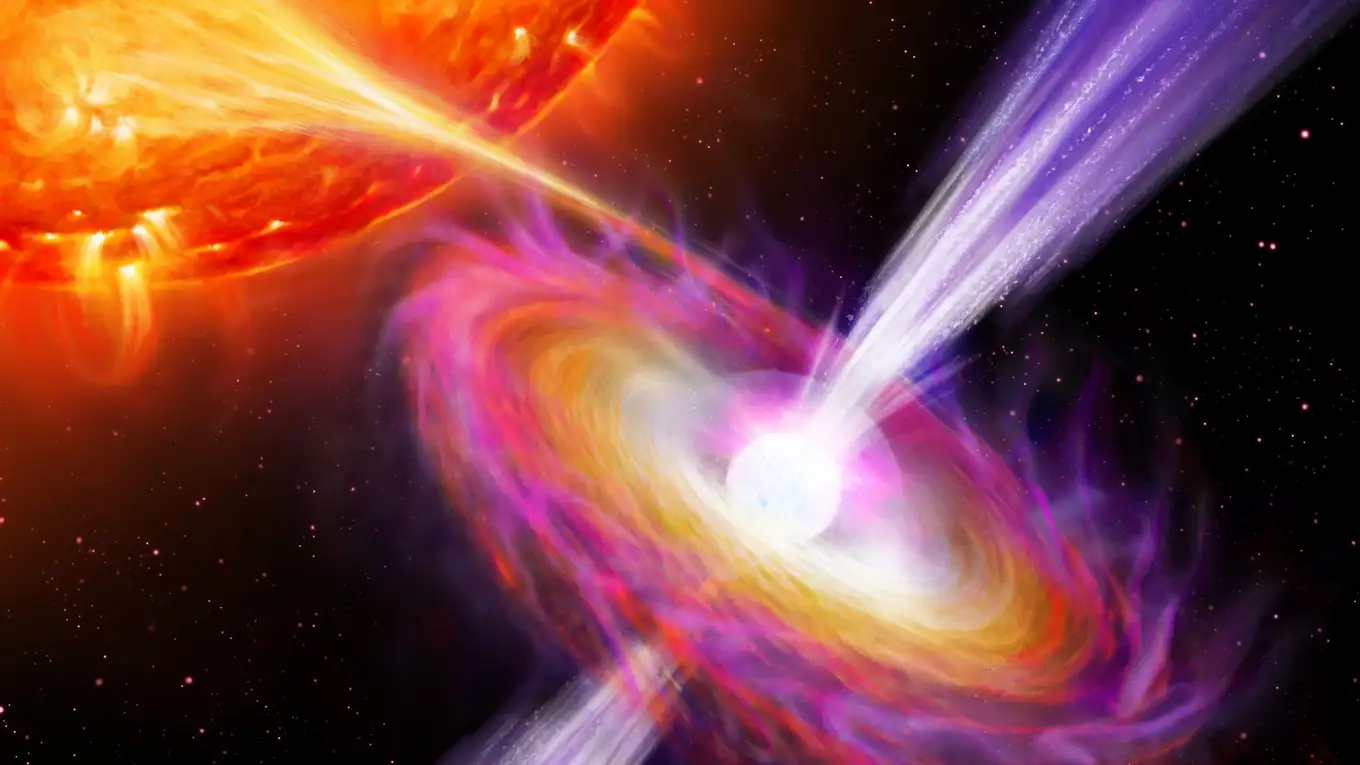
A team of astronomers, including several Dutch scientists, has, for the first time, measured the speed of a jet of gas ejected from a neutron star. The gas in the jet was found to move at only a third of the speed of light. The researchers publish their results and their innovative method in Nature on Thursday.
Neutron stars and black holes are notorious for their enormous gravitational pull that makes them swallow gas from their surroundings. However, these cosmic cannibals also shoot large amounts of gas back into space through powerful jets. These jets play an important role in the universe. However, astronomers do not yet understand exactly how they are formed, how much gas is ejected, or how fast the jets move.
Now, for the first time, a team of astronomers has seen how explosions on the surfaces of neutron stars cause their jets to brighten. The researchers hypothesize that the explosions cause extra gas to be injected into the jet. For the first time, the scientists determined the speed of a jet from around a neutron star.
Radio combined with X-ray
The researchers collected radio emission in April and October 2021 using the which is owned and operated by CSIRO, Australia’s national science agency. At the exact same time, they studied X-rays with ESA’s satellite. Whenever the researchers saw an outburst of X-rays with Integral, indicating a surface explosion, they looked in the Australian data for changes in the jet’s radio emission. They focussed on two frequencies of radio emission, which originate from different locations along the jet, finding bright radio flares after each X-ray explosion.
Subsequently, using advanced techniques, they measured the delay between the X-rays and radio emission at the two different frequencies. This allowed them to trace, so to speak, how gas near the neutron star was injected into the jet and moved through the jet. Consequently, they were able to determine the velocity of the gas in the jet.
The jets were found to move at roughly 114,000 kilometers per second, which is approximately one-third the speed of light. This is considerably slower than the speeds previously measured for the jets of some black holes. The researchers suspect that the mass or rotation velocity of a neutron star or black hole determines the properties of the jets. To find out which particular property drives the speed, the researchers plan to repeat the study on other neutron stars.
Thanks to high-risk grant
“‘For years after I developed the idea for this new experiment, but I did not succeed in getting observing time at a radio telescope through the usual route,’ says , astronomer at the University of Amsterdam. Peers kept rejecting her applications because relatively large amounts of observing time were required while there was a high probability that the experiment would fail.
In 2020, Degenaar from NWO, which she had applied for with then PhD student (now University of Warwick, United Kingdom). That grant is intended specifically for so-called high-risk high-gain experiments. The grant enabled the astronomers to purchase more than three days of observing time. “And now, we have demonstrated that the method works. That’s wonderful,” Degenaar said.
First author Thomas Russell (formerly University of Amsterdam, now working at the Italian Istituto di Astrofisica Spaziale e Fisica Cosmica in Palermo) is delighted: ‘We did expect the X-ray bursts to have some impact on the jet, but we certainly didn’t expect the effects to be so clear.’
Co-author Jakob van den Eijnden adds: ‘This is really an extraordinary discovery. We now have a reproducible method by which we can finally find out how these jets originate.’
